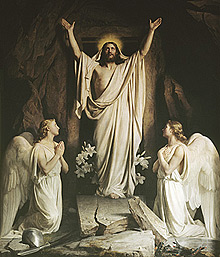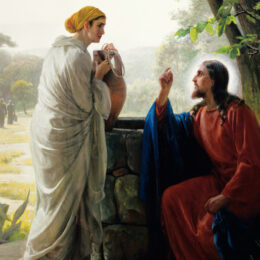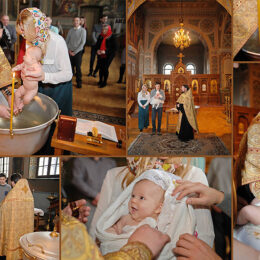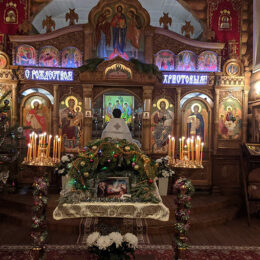5/1/2010 – Regis Nicoll –
The resurrection is one of Christendom’s deepest mysteries and, yet, no different in kind than the mystery of creation—whereby, man was formed from the dust of the earth, and the earth, ex nihilo, by the utterance of God. Consequently, folks who are put off by the resurrection of the dead will likely find the creation of the living a difficult pill as well.
It suggests that the real objection to the resurrection mystery is not so much over the process, but over what the process implies. Someone who is able to reassemble, refurbish, and reinvigorate our remains is Someone who can assert cosmic authority over us and make demands of us. And that is Someone some people would rather not think about, for now.
[…]
Lisa Miller, religion editor for Newsweek, doesn’t “buy” the resurrection of Jesus, or of anyone else for that matter.
In a recent article for the magazine, Miller, a self-described skeptic, recounts her visit to a Jewish scholar (who believes in the resurrection of the dead) to ask how God does it. It’s the same question Michael Shermer, editor-in-chief of Skeptic magazine, put to a Christian physician in a 2004 television special.
The question presupposes that, for the resurrection to be credible, it must be explicable in terms of known physical processes that are medically possible. Yet, if it were, it would be nothing but a slick manipulation of nature by someone who has acquired the knack. Either way, naturalism wins, confirming the presuppositions of the skeptic.
So it is no surprise that when the scholar demurred that the resurrection is a supernatural act of God, Miller’s disbelief remained undisturbed.
“It seems fantastic”
Ms. Miller notes that between 2003 and 2007 belief in the resurrection of Jesus among Americans fell from 80 percent to 70 percent. She adds, with an apparent note of approval, “Thanks to the growth here of Eastern religions, reincarnation—the belief that after death a soul returns to earth in another body—is gaining adherents.” (However, according to the data she cites, belief in reincarnation actually slipped from 27 to 21 percent in that same period.)
If Ms. Miller is as appreciative of reincarnation as that statement would suggest, one wonders why the ability of an unintelligent karmic force to transmogrify a human being into a beetle, buffalo or rose bud is any more credible than the ability of super-intelligent Being to raise a decayed corpse or cremated ashes into a reconstructed body. Religion professor Stephen Prothero offers, “It seems fantastic and irrational that we’re going to have a body in heaven.”
But is it any more fantastic than our present embodiment, whether from materialistic evolution, spiritualistic reincarnation, or theistic creation? Not really. All the same, Miller notes that even among Christians, belief in a bodily resurrection is giving way to belief in a symbolic resurrection—a “rising” representative of spiritual awakening, re-birth, or renewal, either personal or corporate. It is a belief that is against the currents of scripture and early Church teaching.
Biblical tradition
Although the resurrection of the dead does not play prominently in the Old Testament, it is clearly there. For example,
- Job, in the midst of his sorrows, responded to his interlocutors: “I know that my Redeemer lives, and that in the end he will stand upon the earth. And after my skin has been destroyed, yet in my flesh I will see God.”
- In his prophesy about the end times, Daniel wrote: “Multitudes who sleep in the dust of the earth will awake: some to everlasting life, others to shame and everlasting contempt.”
- Expressing confidence in his own resurrection and pointing forward to Jesus’, David exclaimed: “You will not abandon me to the grave, nor will you let your Holy One see decay.”
- Predicting the future restoration of Israel while, in type, representing the resurrection of the dead, Ezekiel’s penned his vision of the “valley of dry bones” raised to life.
With Jesus’ public ministry, references to the resurrection become more frequent:
- First, Jesus predicts His own resurrection: “Destroy this temple, and I will raise it again in three days.”
- Then, He foretells the general resurrection: “I tell you the truth, a time is coming and has now come when the dead will hear the voice of the Son of God and those who hear will live,” adding a Danielian warning “a time is coming when all who are in their graves will hear his voice and come out—those who have done good will rise to live, and those who have done evil will rise to be condemned.”
- Later, He comforts Martha upon the news of her brother’s death: “I am the resurrection and the life. He who believes in me will live, even though he dies.”
Added to numerous prophesies about resurrection are various accounts of individuals being raised from the dead: the Shunammite’s son by Elijah; Lazarus, Jairus’ daughter, and the Nain widow’s son by Jesus; Eutychus by Paul; and Dorcas by Peter.
Importantly, these “raisings” were not resurrections per se, but resuscitations where the affected individuals were revived into the same bodies and with the same abilities and limitations as they had before. Consequently, it is common to hear modern-day skeptics dismiss them as ancient incidences of “near death experiences” that are “explained” with the advances of 21st century medicine and neuroscience.
But the resurrection is something wholly different.
Something wholly different
The resurrection is the reconstitution and reanimation of remains that have decayed beyond all recognition and, sometimes, widely dispersed in the ecosphere. As Tatian, the second century Christian apologist wrote, “Even though fire may destroy all traces of my flesh… I am laid up in the storehouses of a wealthy Lord.” But the thought of putting Humpty together again strains the credibility of even the most ardent believer in the limitless possibilities of science.
What’s more, the product of the resurrection—the “body raised”—is foreign to anything in human experience. We catch a clue about “how foreign” in Jesus’ encounter with the Sadducees.
The Sadducees were a sect of first century rationalists who denied the supernatural, including the resurrection. Hoping to embarrass Jesus, they posed a hypothetical situation to Him: In the resurrection, who would be the spouse of a woman who had been married and widowed multiple times during her life? Obvious to their sophistry, Jesus countered, “You are in error because you do not know the Scriptures or the power of God. At the resurrection people will neither marry nor be given in marriage; they will be like the angels in heaven.”
Apparently our resurrected bodies will not retain the sexual function reserved for marriage and which is so important to human flourishing on earth. I remember the suggestion of a pastor who once said something to the effect, that the completeness and intimacy of our relationships with God and our heavenly family in the new creation will make marriage—which is merely a present “shadow” of our future reality—unnecessary. It is a provocative suggestion.
Perhaps the most important clue about our resurrected bodies comes from the apostle John. In his first epistle, John writes, “Now we are children of God, and what we will be has not yet been made known. But we know that when he appears, we shall be like him, for we shall see him as he is.” If, as John says, “we will be like him,” what the scriptures say about the resurrected Jesus should say something about our resurrected state as well.
The Scriptures reveal the risen Lord as, foremost, an embodied being. He was not, as the Gnostics maintained, a phantom, mirage, or the product of mass hallucination. Yet when He appeared to His followers, sometimes He was recognized, as in the case of the women leaving the empty tomb, but often He was not, as in the case of the Emmaus disciples. Even His initial appearance to the Eleven was met with doubt until He displayed His nail-pierced wounds. Thus, it is reasonable to assume that we, too, will be changed in a way retains our identity, such that we will recognize our loved ones and they will recognize us.
In His glorified body, Jesus ate food—not that He needed food—and could be touched, held and embraced as any flesh and blood person. At the same time, He was not limited by the restrictions of his earthly body: He could disappear (or de-materialize); He could pass through solid objects, and move from one place to the next, seemingly effortlessly and instantaneously. If John is right, there is a good chance that we’ll have the same abilities; though we don’t want to take this too far.
The resurrection is one of Christendom’s deepest mysteries and, yet, no different in kind than the mystery of creation—whereby, man was formed from the dust of the earth, and the earth, ex nihilo, by the utterance of God. Consequently, folks who are put off by the resurrection of the dead will likely find the creation of the living a difficult pill as well.
It suggests that the real objection to the resurrection mystery is not so much over the process, but over what the process implies. Someone who is able to reassemble, refurbish, and reinvigorate our remains is Someone who can assert cosmic authority over us and make demands of us. And that is Someone some people would rather not think about, for now.
HT: BreakPoint




